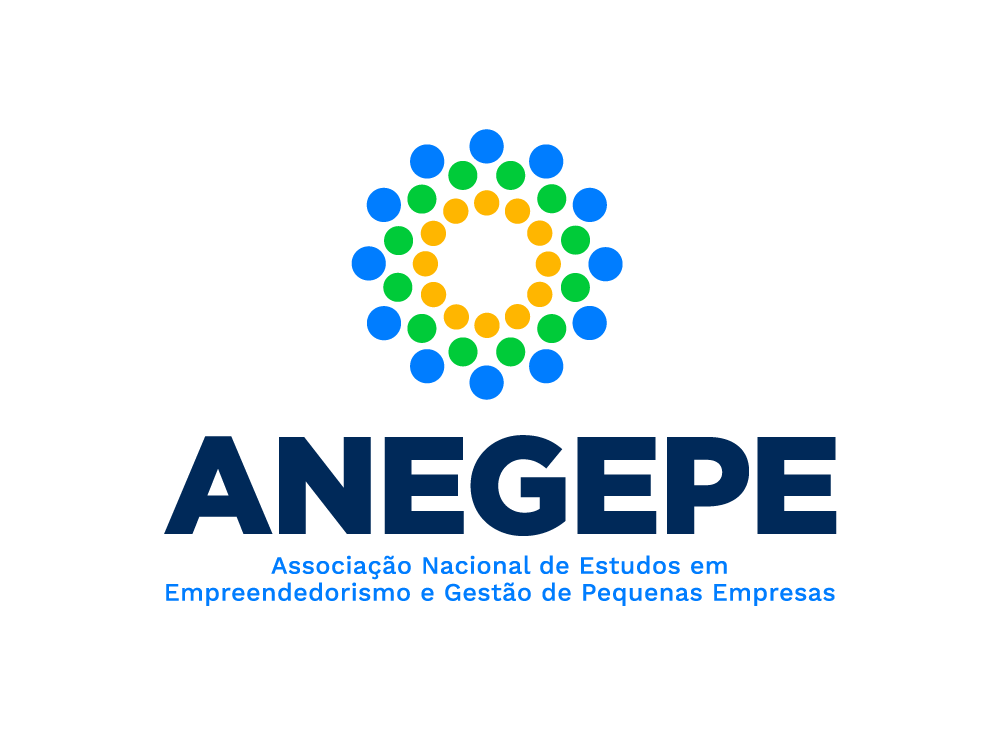Um grande passo para uma pequena empresa: Como a Fumajet pode escalar sua inovação globalmente?
DOI:
10.14211/regepe.esbj.e2342Palavras-chave:
Oportunidade Internacional, Modo de entrada estrangeira, Mercado Emergente, Estratégia Internacional, Empreendedorismo InternacionalResumo
Objetivo: Trata-se de um caso de ensino, projetado para cursos de pós-graduação e graduação em disciplinas de negócios internacionais, marketing internacional ou empreendedorismo internacional. Descreve o processo de identificação e exploração de oportunidade internacional por uma pequena empresa empreendedora – Fumajet – e os dilemas de decisão de seus fundadores em relação à estratégia de internacionalização, e modo de entrada. Dilema ou problema: Diante de diversas alternativas potenciais para estruturar suas atividades internacionais, os empreendedores precisam analisar e selecionar uma estratégia de modo de entrada internacional para apresentar ao recém-criado Conselho de Administração após recente entrada de recursos financeiros. Relevância/originalidade: Baseado em uma situação real, este estudo de caso utiliza dados coletados de fontes primárias e secundárias ao longo de um período de dois anos. Provê assim aos estudantes uma situação real, relevante e usual para tomada de decisão. Ao final deste estudo de caso, os alunos devem ser capazes de aplicar esses aprendizados a cenários do mundo real. Os desafios únicos retratados tornam este estudo de caso particularmente envolvente e estimulante para os estudantes.
Downloads
Referências
Aldrich, H., & Auster, E. R. (1986). Even dwarfs started small: Liabilities of age and size and their strategic implications. Research in Organizational Behavior, 8, 65–186.
Aulakh, P. S., Jiang, M. S., & Pan, Y. (2010). International technology licensing: Monopoly rents, transaction costs and exclusive rights. Journal of International Business Studies, 41(4), 587–605. https://doi.org/10.1057/jibs.2009.19
Brouthers, L. E., & McNicol, J. P. (2009). International franchising and licensing. Kotabe, M.; Helsen, K. (Eds), The Sage Handbook of International Marketing. London: Sage Publications, Thousand Oaks, CA, 183–197. https://doi.org/10.4135/9780857021007.n9
Bruneel, J., & De Cock, R. (2016). Entry mode research and SMEs: A review and future research agenda. Journal of Small Business Management, 54, 135–167. https://doi.org/10.1111/jsbm.12291
Duchêne, A., Sen, D., & Serfes, K. (2015). Patent licensing and entry deterrence: The role of low royalties. Economica, 82, 1324–1348. https://doi.org/10.1111/ecca.12141
Fosfuri, A. (2006). The licensing dilemma: understanding the determinants of the rate of technology licensing. Strategic Management Journal, 27(12), 1141–1158. https://doi.org/10.1002/smj.562
Ghemawatt, P. (2007). Managing differences: The central challenge of global strategy. Harvard Business Review, 85(3), 58–68, 140.
Kahiya, E. T. (2017). Export barriers as liabilities: near perfect substitutes. European Business Review, 29(1), 61–102. https://doi.org/10.1108/EBR-12-2015-0160
Johanson, J., & Vahlne, J.-E. (2009). The Uppsala internationalization process model revisited: From liability of foreignness to liability of outsidership. Journal of International Business Studies, 40(9), 1411–1431. https://doi.org/10.1057/jibs.2009.24
Johanson, J., & Vahlne, J.-E. (1977). The Internationalization Process of the Firm—A Model of Knowledge Development and Increasing Foreign Market Commitments. Journal of International Business Studies, 8(1), 23–32. https://doi.org/10.1057/palgrave.jibs.8490676
Laufs, K., & Schwens, C. (2014). Foreign market entry mode choice of small and medium-sized enterprises: A systematic review and future research agenda. International Business Review, 23(6), 1109–1126. https://doi.org/10.1016/j.ibusrev.2014.03.006
Levitt, T., (1983). The Globalization o fMarkets, Harvard Business Review, 61(3), pp. 92-102.
Madhok, A., & Keyhani, M. (2012). Acquisitions as entrepreneurship: asymmetries, opportunities, and the internationalization of multinationals from emerging economies. Global Strategy Journal, 2(1), pp. 26–40. https://doi.org/10.1002/gsj.1023
Maximize Market Research. (n.d.). Pesticides Market: Global Industry Analysis Outlook and Forecast (2022-2029). Retrieved April 25, 2023, from https://www.maximizemarketresearch.com/market-report/global-pesticides-market/110794/
Mittelstaedt, J. D., Harben, G. N., & Ward, W. A. (2003). How small is too small? Firm size as a barrier to exporting from the United States. Journal of Small Business Management, 41(1), 68–84. https://doi.org/10.1111/1540-627X.00067
Peng, M. W. (2022). Global strategy (5th ed.). Cengage.
Persistence Market Research. (n.d.). Market Study on Pesticides: Popularity of Bio-pesticides to Rise Rapidly Over Coming Years. Retrieved April 25, 2023, from https://www.persistencemarketresearch.com/market-research/pesticides-market.asp
Sestu, M. C., Majocchi, A., & D’Angelo, A. (2018). Entry Mode Strategies: Are SMEs Any Different? In N. Dominguez & U. Mayrhofer (Eds.), Key Success Factors of SME Internationalisation: A Cross-Country Perspective. 34, pp. 63–80. Emerald Publishing Limited. https://doi.org/10.1108/S1876-066X20180000034004
Tharp., B. M. (2012). Product Licensing 101: So Let’s Talk Money - Core77. Retrieved October 18, 2020, from https://www.core77.com/posts/23366/Product-Licensing-101-So-Lets-Talk-Money
Transparency Market Research. (n.d.). Pesticides Market - Global Industry Analysis, Size, Share, Growth, Trends, and Forecast (2017 - 2025) - Report Preview. Retrieved April 25, 2023, from https://www.transparencymarketresearch.com/global-pesticides-market.html

Downloads
Publicado
Métricas
Visualizações do artigo: 1954 Case study (pdf) (English) downloads: 266 Teaching notes (pdf) (English) downloads: 123 xml (English) downloads: 0 Audio (English) downloads: 28 Video (English) downloads: 27
Como Citar
Edição
Seção
Licença
Copyright (c) 2024 Henrique Fernandes Pacheco, Angela da Rocha, Renato Cotta de Mello, Clarice Secches Kogut

Este trabalho está licenciado sob uma licença Creative Commons Attribution 4.0 International License.
Autores que publicam nesta revista concordam com os seguintes termos:
- O(s)/A(s) autor(es)/autora(s) autorizam a publicação do texto na revista;
- A revista não se responsabiliza pelas opiniões, ideias e conceitos emitidos nos textos, por serem de inteira responsabilidade de seus autores/autoras;
- Autores/autoras mantêm os direitos autorais e concedem à revista o direito de primeira publicação, com o trabalho publicado sob a Licença CC BY 4.0
, que permite o compartilhamento do trabalho com reconhecimento da autoria e publicação inicial nesta revista;
- Autores/autoras são permitidos e encorajados a postar seu trabalho (Versão submetida, Versão aceita [Manuscrito aceito pelo autor/autora] ou Versão publicada [Versão do registro]) online, por exemplo, em repositórios institucionais ou preprints, pois isso pode levar a trocas produtivas, bem como a citações anteriores e maiores de trabalhos publicados. A REGEPE pede como condição política para os autores/autoras que indiquem/vinculem o artigo publicado com DOI. Veja o Efeito do Acesso Livre.














